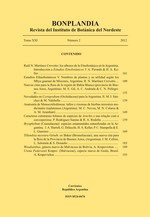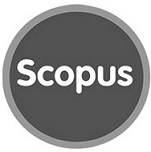Anatomy of Monocotyledons: stems and rhizomes of land herbs used as medicinal in the Río de La Plata area (Argentina)
DOI:
https://doi.org/10.30972/bon.2121285Palabras clave:
Anatomy, medicinal plants, Monocotyledons, rhizome, aerial stemResumen
Aerial stems of Cenchrus spinifexCav., Commelina erectaL., Sisyrinchium chilenseHook. subsp. chilense, and Tripogandra diuretica(Mart.) Handlos, and rhizomes of Arundo donax L., Cynodon dactylon(L.) Pers., and Kyllinga odorataVahl were studied. These organs are used in folk medicine in the Río de La Plata area. The objective was to get diagnostic characters to elaborate a key to distinguish the taxa from whole or fragmented caulinar samples. Conventional histological and microchemical methods were used. The main differential traits were found in epidermal cell shapes, position and stomata type, trichome types, distribution of fibers, characteristics of vascular bundles, and crystals. Every species gave positive reaction for starch, and for mucilages the reaction was positive in Commelinaceae species. Most of the species gave negative reaction for lipophilic and phenolic substances, however Kyllinga odoratarhizome showed interesting content of secretory substances and gave positive reaction for oils droplets.Descargas
Los datos de descargas todavía no están disponibles.
Descargas
Publicado
2012-07-01
Cómo citar
Novoa, M. C., Colares, M. N., & Arambarri, A. M. (2012). Anatomy of Monocotyledons: stems and rhizomes of land herbs used as medicinal in the Río de La Plata area (Argentina). Bonplandia, 21(2), 149–157. https://doi.org/10.30972/bon.2121285
Número
Sección
Artículos originales
Licencia
Declaration of Adhesion to Open Access
- All contents of Bonplandia journal are available online, open to all and for free, before they are printed.
Copyright Notice
- Bonplandia magazine allows authors to retain their copyright without restrictions.
- The journal is under a Creative Commons Attribution 4.0 International license.















.jpg)


